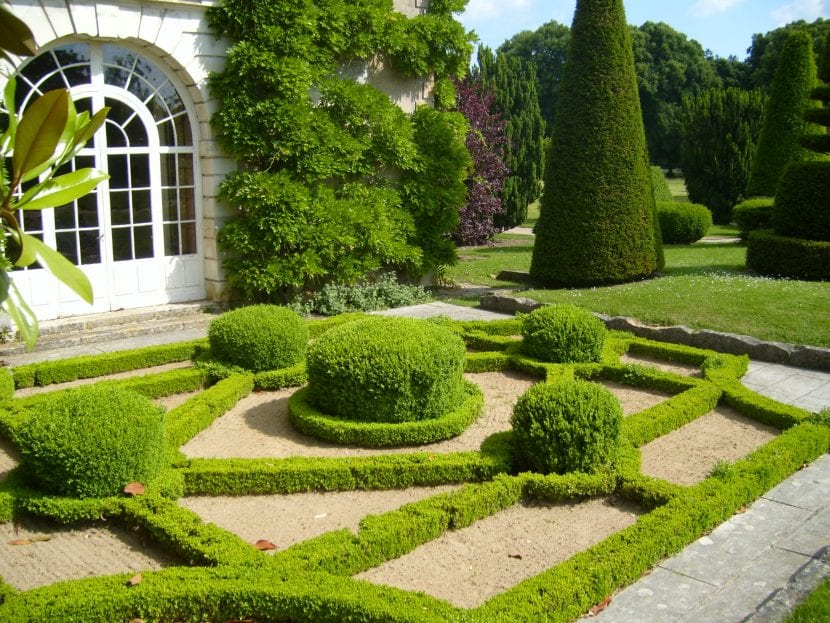
If you are one of those who love order, you will surely enjoy visiting -or designing 😉 - a french garden. In it, symmetry and order are the indisputable protagonists. You won't see a branch sticking out of the design, no randomly placed plants.
This design, in addition to being very beautiful, also entails high maintenance, especially pruning. But If you are still interested in knowing what its characteristics are, then I will tell you.
A Little History
From
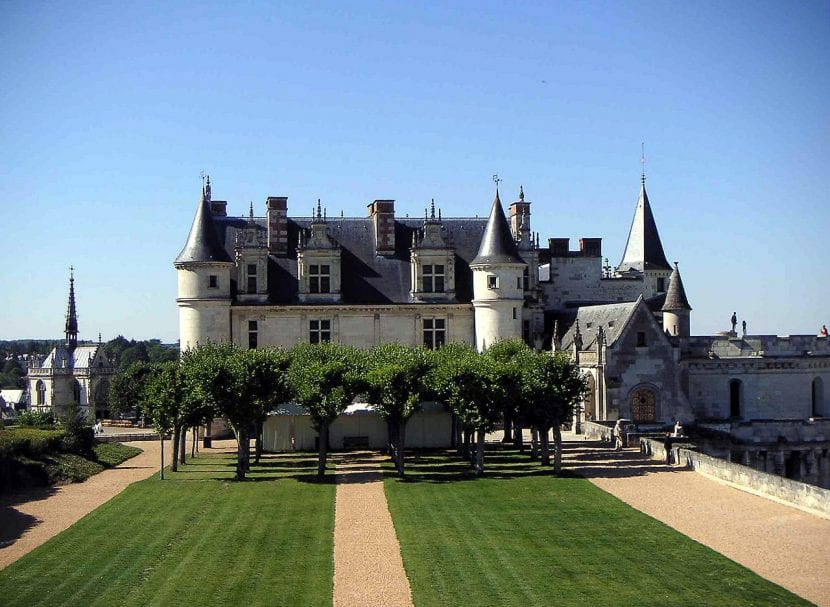
The French garden, known in France as a regular garden or a classical garden, evolved from the French Renaissance garden which was inspired by the Italian Renaissance garden in the early XNUMXth century. In said garden flower beds were planted and then they were given geometric shapes so that over time they presented symmetrical patterns; in addition, fountains and waterfalls were installed to brighten up the garden, and the different levels were connected with stairs and ramps. Labyrinths and statues were added to pay homage to Ancient Rome and its virtues.
In 1495, King Charles VIII enlisted the services of Italian artisans and garden designers, such as Pacello da Mercogliano, to build one at his residence at the Château de Amboise and at Château Gaillard. His successor, Henry II, who met Leonardo da Vinci during his trip to Italy, created another Italian garden in the vicinity of the château de Blois. Starting in 1528, new gardens were created in the Italian style but with strong influences from King Francisco I, who arranged fountains, flower beds and a pine forest brought from Provence.
In 1538, the architect Philibert de l'Orme, created the gardens of the castle of Anet, following the Italian proportions, but with flower beds and with fountains and ponds integrated between the sections of vegetation.
First major garden
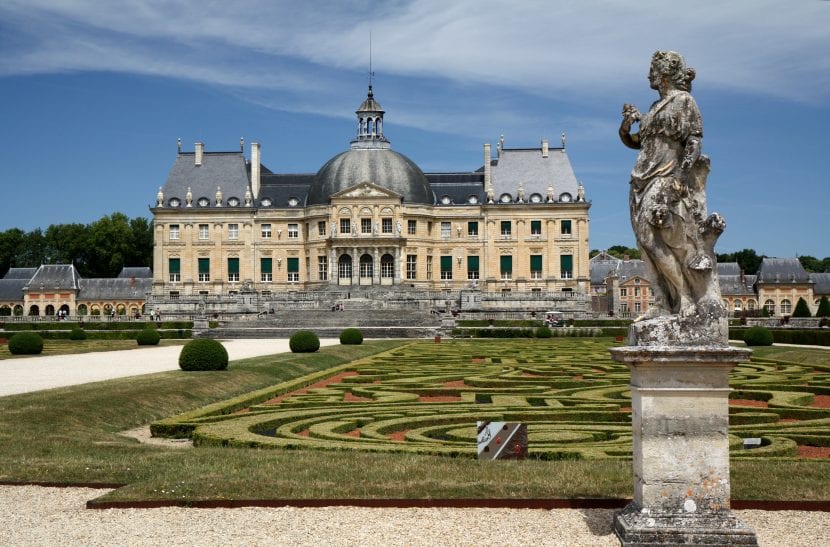
The first major French garden was created by Nicholas Fouquet, who was Louis XIV's Finance Superintendent from 1656. This gentleman, with the help of Louis Le Vau, Charles Le Brun and André Le Nôtre, design, in an area of 1500 meters a beautiful garden with evergreen shrubs, bordered by red sand and walks decorated with statues, ponds, fountains and perfectly sculpted topiaries.
Versailles Gardens

The gardens of Versailles are one of the best known in France and in the world. They were designed between 1662 and 1700. They were one of the largest in Europe, with an area of 15000 hectares and they were located on an east-west axis that followed the course of the sun. The star king came out on the Court of Honor, gave light to the Marble courtyard, then crossed the château and the King's bedroom was illuminated to finish at the end of the Grand Canal, where it was reflected in the mirrors of the Gallery of Mirrors.
Contrary to what one might think, when reaching the horizon the garden surprised everyone with its fountains, statues and intimate corners.
Slope
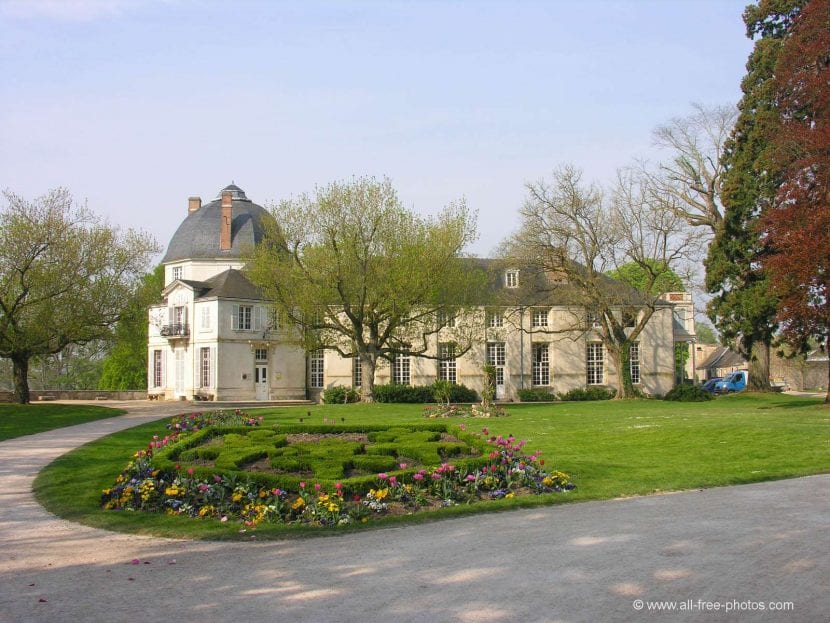
The French Renaissance garden little by little gave way to the most "modern" ideas. The strict geometry that had governed until the mid-1700s, gradually varied. For example, flower beds, previously curved and counter-curved, were replaced by grass beds lined with flower beds, which are easier to maintain. What's more, irregular shapes of octagons appeared, inspired more by the natural landscape and not so much by architecture.
In the middle of the XNUMXth century it was influenced by the English garden, which had been designed by British aristocrats and landowners and the popularity of the Chinese style, which had come to France from the hand of the Jesuit priests of the court of the Emperor of China. At that time, the garden closest to the house was kept in the traditional style, but the rest became an English-style garden. Shortly after, the landscaped garden arrived in the country, which was inspired by philosophy, painting and literature.
What are its principles and / or characteristics?
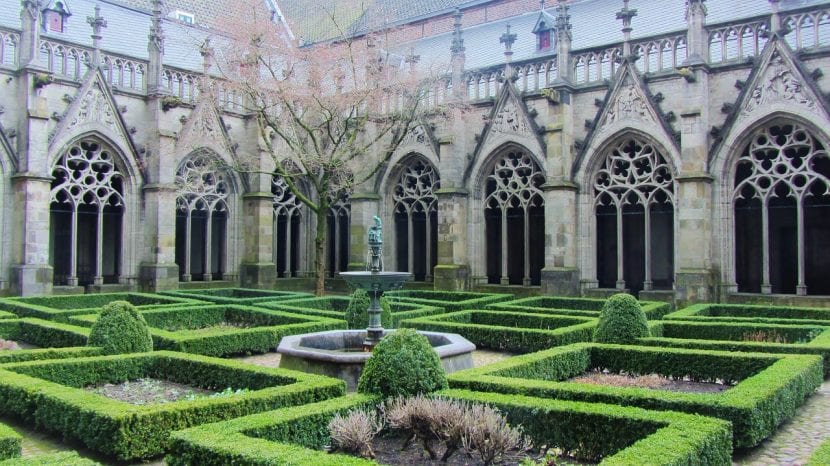
Now that we have known the origin and history of the French garden, let's see what it must include to really have this style; That is, as soon as we enter the door it is easy for us to find out what design it has:
Geometry
It is, perhaps, the most important thing. The flowerbeds, the paths, everything has to be geometric. For this, what was done in the past was use the knowledge they had about perspective and optics. Thus, they were able to "dominate" nature, shaping it, directing it.
Terrace overlooking the garden
As the French landscape architect Olivier de Serres wrote in 1600, gardens have to be viewed from the top down. At least, there must be a terrace that allows the visitor -or owner- to see it at once.
The residence as a central point
The residence should serve as the central point. Not trees will be planted near it, but low flower beds and trimmed bushes. From it, a central axis will be created consisting of a lawn, fountain or pond, and bordered by trees. In addition, it has to be crossed by one or more perpendicular walks.
Flower beds
Those who are close to the residence they will be designed with low box hedges and with flowers, colored bricks, gravel or sand. Farther from the home, flowerbeds will include water fountains or ponds; and beyond, small groves will be planted.
Garden animation
To animate the French garden what is done is put up sculptures, waterfalls, fountains and some flowers.
What plants do they put on?
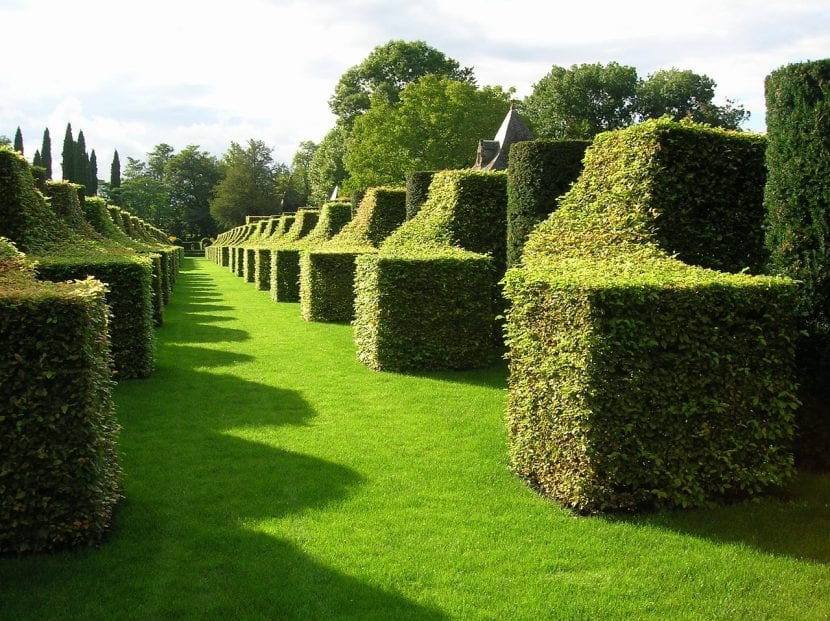
If there is something that stands out in a French garden, apart from order and geometry, it is the plants. When you see one from a bird's eye view or in a photo, you realize that the predominant color is green. Shrubs like buoy (Buxus sempervirens), lavender essence (lavender), cypress trees (cupressus), yew trees (Taxus) are very common. We can also find Trees of feeble leaves, As the beech (Fagus sylvatica), hornbeam (carpinus), elm trees (Ulmus) or Linden (tillia platyphyllos).
And flowers? They are not very common, but they are usually planted cyclamen (cyclamen persica), tulips (Tulip), daffodils (Narcissus) and lilies (Lilies).
And with this we are done. What do you think of the French garden?